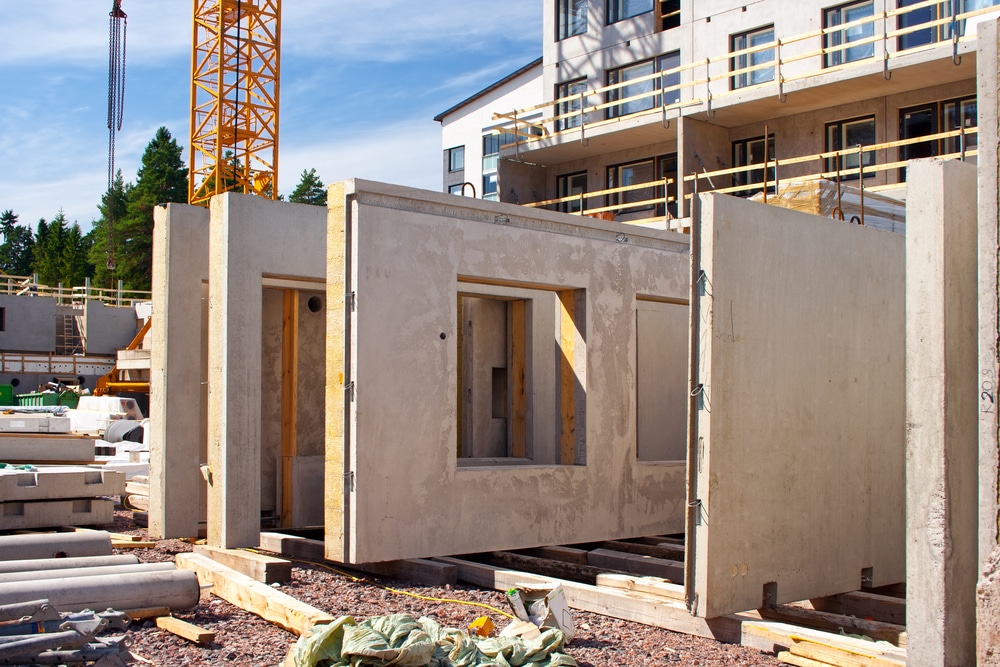Over the past decade, we have seen the overall shift of people’s consumption towards what’s more morally and ethically sound. When it comes to the construction sector, consumers value what is more environmentally-friendly and what is more energy-efficient. Aside from its impact on the environment, people have seen that green choices are correlated to better cost effectiveness.
Both owners and builders have realised and recognised that the use of green building materials and green technologies allow for less waste, better use of energy, and lower construction costs. As owners demand lower costs with better risk management, builders are changing their approach to construction projects. As builders demand greener materials, manufacturers have no choice but to provide more sustainable options.
Green Building
As mentioned in a previous post, the green building movement has grown a lot within the construction industry in the past decade. Concerns about climate change and nonrenewable energy use mainly drove the adoption of sustainable building strategies. Economic and ergonomic reasons like improved building efficiency and increased construction performance added to the push.
Green building revolves around building site sustainability, energy efficiency, water use efficiency, indoor environmental quality, and the building’s atmospheric impact. The whole point is to reduce the environmental impact of a construction project.
The construction sector accounts for at least 40% of primary energy consumption, and it’s becoming imperative for manufacturers to come up with building materials that don’t use up a lot of energy to produce. Green materials and practices are becoming the industry standard. As governments help in modernising the practice, incentives are in place to reduce cost and energy use in constructing new buildings.
Green Materials
Green materials or sustainable building materials are items of renewable resources. A sustainable building material has the following key features:
- Renewable. Green materials are those that can be reused and recycled as they reach the end of their life. Green materials bypass the usual linear resource usage of “extract-use-dispose”. Green materials allow for a closed-loop process where they get reused and recycled as many times as possible.
- Energy Efficient. Green building materials reduce energy consumption in buildings and facilities. They may also be manufactured through an energy efficient process, or made from energy efficient materials.
- Cost Effective. Green materials reduce maintenance and replacement costs during the life of the structure.
- Improved Indoor Quality. Green materials improve indoor quality of a structure which results in an overall improved health for the occupants. The usual non-sustainable building materials emit volatile organic compounds that have detrimental health effects. Green materials emit very little or no VOCs at all, which improve the overall indoor air quality of a building.
Examples of green building materials include:
- Solar panels
- Reclaimed wood
- Cork and bamboo floorings
- Recycled rubber or recycled plastic roof shingles
- Triple-glazed windows
- Homasote fiberboard (recycled newsprint insulation)
- Low VOC paints
- Low-flow shower heads
Green Innovation
As the construction industry shifts to a greener practice, doors for the innovation of greener building products are opening. High-quality building materials with sustainability standards are now available in the market — high-performance window films that block UV and IR radiation that regulate indoor temperatures, and paints that reduce volatile organic compounds emissions and improve indoor air quality.
Most manufacturers and contractors have become creative in reusing elements of existing structures and continually improve on creating less waste and providing unique recycled and upcycled architectural elements. This creativity drives consumers as well.
Green Impacts
Apparently, the construction industry consumes about 3 billion tons of raw materials annually — this number represents 40% of global usage of raw materials (Worldwatch Institute, 2016). Of this, detailed accounts for 7–10% of global carbon dioxide emissions. The shift to a more sustainable living has more regulations being introduced to ensure that green materials and practices are being used in construction projects.
Green materials are more expensive than traditional building materials, but in the long run, they produce a final product that is more cost effective and energy efficient. Whatever the project size and budget, green building materials have become the affordable options.
Leadership in Energy and Environmental Design
Leadership in Energy and Environmental Design (LEED) is one of the most popular green building certification programs used worldwide. Developed by the non-profit U.S. Green Building Council (USGBC), it includes a set of rating systems for the design, construction, operation, and maintenance of green buildings, homes, and neighbourhoods that aims to help building owners and operators be environmentally responsible and use resources efficiently (Berkeley Planning Journal, 2015). In fact, LEED projects have diverted over 80 million tons of waste from landfills — this significantly minimises the environmental impact of construction. With all this positive impact, the demand for LEED construction is steadily growing. In the United States, green building materials are taking over the industry. At least 48% of non-residential construction projects are now classified as green building. In 2005, this number was at 1.4%. The shift to green building has been of massive leaps.
Additionally, in respective governments, once a construction project is recognised as a legitimate green building, property tax credits are given. Grants are also available for eco-friendly construction.
Green Benefits
Going green may mean it’s good for the environment and may offer healthier spaces but what’s most appealing to consumers is that it saves a lot of money. For the morally and ethically conscious, this may sound off, but in a system that’s mostly based on economic gains, the use of sustainable materials that leads to fewer repairs and replacements is what sells.
Complement this insightful piece with how the smart building movement is growing faster because of the benefits it brings regarding sustainability and safety – then revisit environmental laws in construction that support a more sustainable approach in the industry. Download a free ebook on construction productivity and supplement your green building processes to efficiently achieve your sustainable building goals.



